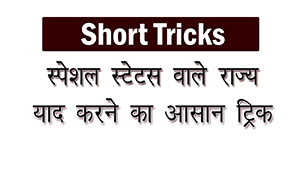Problems on Numbers Questions Answers
-
8. The product of two numbers is 120 and the sum of their squares is 289. The sum of the number is
- 20
- 23
- 27
- 150
Answer And Explanation
Answer: Option B
Explanation:
We know
\begin{aligned}
(x + y)^2 = x^2 + y^2 + 2xy
\end{aligned}
\begin{aligned}
=> (x + y)^2 = 289 + 2(120)
\end{aligned}
\begin{aligned}
=> (x + y) = \sqrt{529} = 23
\end{aligned} -
9. Three times the first of three consecutive odd integers is 3 more than twice the third. The third integer is
- 12
- 13
- 15
- 17
Answer And Explanation
Answer: Option C
Explanation:
Let the three integers be x, x+2 and x+4.
Then, 3x = 2(x+4)+3,
x= 11
Therefore, third integer x+4 = 15 -
10. Find the number which when multiplied by 15 is increased by 196
- 10
- 12
- 14
- 16
Answer And Explanation
Answer: Option C
Explanation:
Let the number be x.
Then, 15x = x + 196
=› 14 x= 196
=› x = 14. -
11. if the sum of \begin{aligned} \frac{1}{2} \end{aligned} and \begin{aligned} \frac{1}{5} \end{aligned} of a number exceeds \begin{aligned} \frac{1}{3} \end{aligned} of the number by \begin{aligned} 7\frac {1}{3} \end{aligned}, then number is
- 15
- 20
- 25
- 30
Answer And Explanation
Answer: Option B
Explanation:
Seems a bit complicated, isnt'it, but trust me if we think on this question with a cool mind then it is quite simple...
Let the number is x,
then, \begin{aligned} (\frac{1}{2}x + \frac{1}{5}x) - \frac{1}{3}x = \frac{22}{3} \end{aligned}
\begin{aligned}
=> \frac{11x}{30} = \frac{22}{3}
\end{aligned}
\begin{aligned}
=> x = 20
\end{aligned} -
12. find the number, If 50 is subtracted from two-third of number, the result is equal to sum of 40 and one-fourth of that number.
- 214
- 216
- 114
- 116
Answer And Explanation
Answer: Option B
Explanation:
Let the number is x,
\begin{aligned}
=> \frac{2}{3}x-50 = \frac{1}{4}x + 40
\end{aligned}
\begin{aligned}
<=> \frac{2}{3}x-\frac{1}{4}x = 90
\end{aligned}
\begin{aligned}
<=> \frac{5x}{12} = 90
\end{aligned}
\begin{aligned}
<=> x = 216
\end{aligned} -
13. Product of two natural numbers is 17. Then, the sum of reciprocals of their squares is
- \begin{aligned} \frac{290}{289} \end{aligned}
- \begin{aligned} \frac{1}{289} \end{aligned}
- \begin{aligned} \frac{290}{90} \end{aligned}
- \begin{aligned} \frac{290}{19} \end{aligned}
Answer And Explanation
Answer: Option A
Explanation:
If the numbers are a, b, then ab = 17,
as 17 is a prime number, so a = 1, b = 17.
\begin{aligned} \frac{1}{a^2} + \frac{1}{b^2} =
\frac{1}{1^2} + \frac{1}{17^2}
\end{aligned}
\begin{aligned} = \frac{290}{289}
\end{aligned} -
14. Sum of three numbers 264, If the first number be twice then second and third number be one third of the first, then the second number is
- 70
- 71
- 72
- 73
Answer And Explanation
Answer: Option C
Explanation:
Let the second number is x, then first is 2x, and third is 1/3(2x)
\begin{aligned}
=>2x + x + \frac{2x}{3} = 264 <=> \frac{11x}{3} = 264
\end{aligned}
\begin{aligned}
=> x = 72
\end{aligned}














